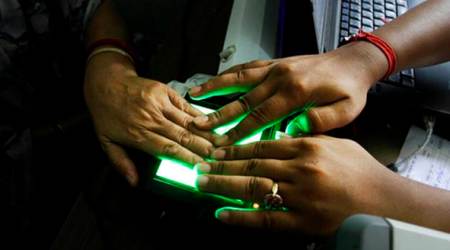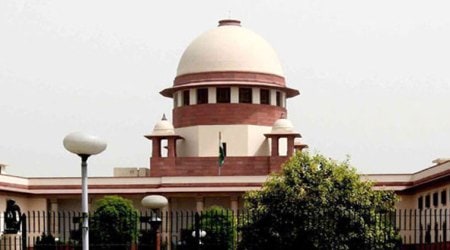 The apex court decided on right to privacy as a fundamental right on Thursday.
The apex court decided on right to privacy as a fundamental right on Thursday.
The Supreme Court on Thursday ruled that right to privacy is a fundamental right under the Constitution of India. The Bench of nine judges stated that right to privacy shall be a part of Article 21 (right to life and liberty) of the Constitution.
Here is the timeline of the case:
July 21, 2015: A Bench of Justices J. Chelameswar, S.A. Bobde and C. Nagappan passed an interim order on September 23, 2013, making Aadhaar voluntary. But in 2015 the apex court observed that making Aadhaar mandatory was in violation of the Supreme Court’s order passed in 2013.
July 22, 2015: Former Attorney General Mukul Rohatgi, on behalf of the Centre, suggested the Court that a separate bench should hear the issues relating to right to privacy and constitutionality of the UID programme and hence a larger bench should hear the particular contentions.
August 6, 2015: The Supreme Court questioned the Centre’s stand on right to privacy not being a fundamental right. Rohatgi submitted that right to privacy was not explicitly stated in the Constitution as a fundamental right and suggested the court that this matter be heard by a nine-judge bench. Centre relied on previous judgments, which cited that right to privacy was not a fundamental right and informed the court that no other judgment had overruled the same.
August 11, 2015: A Bench of three judges passed an interim order on the Aadhaar-privacy matter and passed three important orders. The Supreme Court made Aadhaar voluntary and removed the mandate to provide an Aadhaar card for availing benefits. The apex court further linked the use of Aadhaar in PDS and LPG distribution and distribution of personal information was made illegal.
October 7, 2015: Despite Centre’s vigorous plea to modify the inerim order, Supreme Court did not agree to link Aadhaar cards with the Digital India initiative and services such as banking and telecom. Justice J. Chelameswar directed Centre to raise its plea to the Constitutional bench when formed.
October 8, 2015: The then Chief Justice of India H.L. Dattu decided to set up another Constitution Bench to look into the issue relating to privacy in the Aadhaar matter.
April 25, 2016: Jairam Ramesh challenged the introduction of Aadhaar as a money bill and the Aadhaar Act, 2016 came under the Supreme Court scanner.
October 15, 2015: The Bench of five judges permitted the government to use Aadhaar for Mahatma Gandhi National Rural Employment Guarantee Scheme (MGNREGS), National Social Assistance Programme (Old Age Pensions, Widow Pensions, Disability Pensions) Prime Minister’s Jan Dhan Yojana (PMJDY) and Employees’ Provident Fund Organisation (EPFO).
March 27, 2017: Chief Justice of India J.S. Khehar observed that Aadhaar can be “pressed” for all “non-benefit” plans where questions of entitlements do not occur like opening a bank account or filing Income Tax returns. Recently, the Finance Bill had made Aadhaar mandatory for filing tax returns and a permanent account number (PAN) under Section 139AA of the Income Tax Act, 1961.
April 27, 2017: The Division Bench of Justice A K Sikri and Ashok Bhushan heard PILs challenging the constitutionality of Section 139AA of the Income Tax Act under the Finance Act, 2017. Arvind Datar, counsel for the petitioner, stated that the said provision was meant to check black money and weed out fraudulent PANs. The court observed that it cannot interfere in a law brought out by the Parliament and listed the matter for a further date.
May 19, 2017: The Supreme Court had heard a petition seeking interim relief from providing Aadhaar cards to avail benefits of 17 social schemes. The Cantre had urged the bench to hear the plea before June 30, deadline put by the government on providing Aadhaar. Seeking an interim stay on the deadline put by the government, Shyam Divan, counsel for the petitioner, brought to Court’s that despite the directions given by the court making Aadhaar voluntary, the Centre had released various notification making it mandatory. Divan pressed the matter’s urgency to be heard and the Court listed the matter on June 27, three days before the said deadline.
June 9, 2017: The apex court stated that it would refrain from entering into the issue of right to privacy relating to the Aadhaar matter and noted the apprehension of Section 139AA of the Income Tax Act. The Supreme Court left the issue of right to privacy involving sharing of biometric data under the Aadhaar scheme to the Constitution Bench.
August 2, 2017: The arguments regarding the right to privacy commenced on July 19 and lasted for six days before the bench of nine judges. The Supreme Court reserved the order on the issue on August 2.

